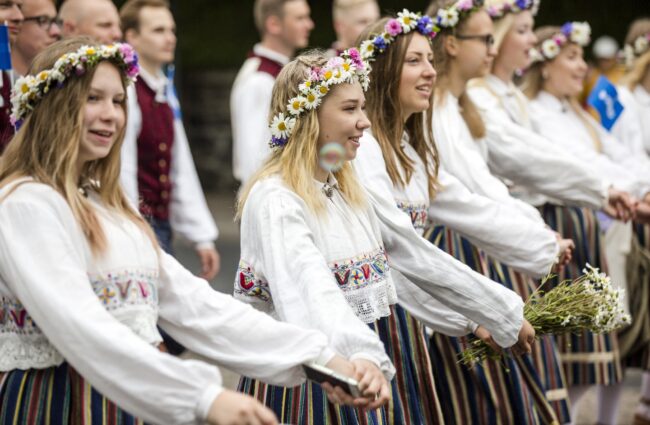The number of native Estonian’s in the population is shrinking
Text Mark Taylor Photo Andrei Chertkov
Data from the 2021 population and housing census reveals that 72.5% of Estonia’s population is made up of native people (persons with at least one parent and grandparent born in Estonia). At the time of the previous census, the share of the native populace was 75.3%, which means that the proportion of natives in the population has decreased by 2.8 percentage points in the last 10 years. However, the share of people of foreign-origin who consider themselves ethnic Estonians has increased.
According to census data, there are a total of 962,643 people of native origin living in Estonia, which is 10,251 fewer than in the previous census conducted in 2011 (972,894). The remaining 27.5% of Estonia’s population, are of foreign origin.
The foreign-origin population is divided into first, second, and third generations according to whether individuals settled in Estonia themselves or whether their parent(s) or grandparent(s) had already done so before them. 13.4% of Estonia’s inhabitants belong to the first, 7.7% to the second, and 6.4% to the third generation.
The largest group of people of foreign origin – the first generation – consists of permanent residents of Estonia who and whose parents were born abroad.
“These are foreign-born people who have come to live in Estonia, i.e. immigrants. In the younger age groups, the first generation includes, for example, foreign students who have been living here for a longer period of time, while in the older age groups, we see people who were born elsewhere and stayed in Estonia after the country regained its independence,” said Terje Trasberg, a leading analyst at Statistics Estonia.
The descendants of the first generation are classified as second generation. This group may also cover, for example, a child born in Estonia to a woman who moved to live and work here from abroad. The third generation of foreign-origin population is made up of individuals with at least one parent born in Estonia and both sets of grandparents born elsewhere.
“Compared with the previous census of 2011, the biggest change has occurred in the third generation of foreign-origin population. Its share has increased by 2.4 percentage points in 10 years,” noted Trasberg.
The majority – 54.4% or 97,406 people – of Estonia’s first-generation foreign-origin population were born in Russia. Second in the ranking of countries of birth is Ukraine with 15.5% (not including those who fled the war), followed by Belarus (5.6%), Latvia (3.1%), and Finland (2.5%).
The first generation of the foreign-origin population are concentrated not only in Harju and Ida-Viru county but also in other larger cities. The foreign-origin population of the second and third generation, on the other hand, has spread more to the counties surrounding bigger cities. As expected, the highest proportion of the native population (97%) is located in Hiiu and Saare counties, which were also at the top of the county rankings in terms of the share of the native populace in the 2011 census as well.
47% of the total foreign-origin population have Estonian citizenship, which is more than in 2011, when the proportion was 44.6%. Of immigrants, i.e. the first generation of foreign-origin population, 27.3% hold Estonian citizenship (in 2011 – 32.7%). In the second generation, the percentage is 57.7 (2011 – 53%) and among the third generation, the share of persons with Estonian citizenship is 75% (2011 – 67.1%).
Estonia’s foreign-origin population has become more diverse in the last ten years. In 2011, holders of Russian citizenship and stateless persons together accounted for 91.9% of the total foreign-origin population, whereas they represented only 72.5% of the population in the 2021 census. The share of people with Ukrainian, Latvian, and Finnish citizenship among the first generation of the foreign-origin population has increased significantly.
11.6% of people of foreign origin consider themselves ethnic Estonians. The proportion of ethnic Estonians has increased the most among the third generation of the foreign-origin population. At the time of the 2011 census, their share was 10.7%, but it has now risen to 22.6%.
“This means that people of foreign origin who were born in Estonia and have lived here for three generations now consider themselves to be ethnic Estonians more often than before,” added Trasberg.
To learn more about this and similar topicsBelarus Finland Foreign Foreign Origin Latvia Population Census Russia Ukraine










